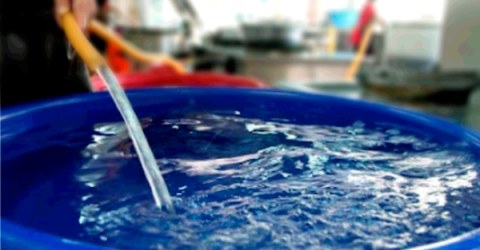EVERY festive season we will come across news regarding the poor treated water supply situation in suburban and rural areas. In 1970, the urban population was 28.4 % (2,962,795) and this increased to 75.1% (24,354,046) in 2020, according to the Department of Statistics Malaysia.
The urban population has increased 8.2 times. During this period, the rural population was maintained between 7.48 million and 8.66 million. In 2020, the rural population was recorded at 8.09 million.
While more infrastructure was developed in urban areas between 1970 and 2020, rural water services infrastructure development may have reached a plateau. Based on national water statistics for Peninsular Malaysia and Labuan, treated water consumption for the domestic sector stood at 65.1% in 2021 and states like Kedah, Kelantan, Perak and Perlis had more than 70% domestic consumption.
Generally, developers are mandated by law to build service reservoirs for new developments. One-day storage is also made available within premises. However, old settlements in some urban, suburban and most rural areas do not have service reservoirs as these settlements did not have law mandating such storage capacity previously. As a result, settlements at high elevation or faraway locations from the main reservoir will face low water pressure or no water supply at peak hour demand during normal operation.
During the dry season, demand for treated water increases above normal demand and the festive season balik kampung practice also increases demand for treated water. Due to poor water services infrastructure, these areas will face low pressure or no water supply during peak hour demand for a longer period.
Another factor that aggravates the situation is the limited capacity of water treatment plants catering to these zones. A water treatment facility that is not able to cater to a surge in demand for treated water will only prolong the situation. Many states are still having very low or no treated water reserve margin. Reserve margin is additional treated water capacity available after meeting existing demand. This reserve margin is vital to cater for sudden increase in demand or speed up water supply recovery after water supply disruption. Kedah, Kelantan and Perlis had no reserve margin by 2021. Water-stressed Malacca had only 7.5% reserve margin by 2021.
The National Water Services Industry Restructuring (NWSIR) initiative was designed to improve water services infrastructure and finance improvements with a more affordable mechanism. Pengurusan Aset Air Bhd (PAAB) was formed under the Ministry of Finance to handle the financing portion of the infrastructure development. The Water Services Commission or Suruhanjaya Perkhidmatan Air Negara (commonly known as SPAN) was formed as a regulator to regulate service, technical and economic aspects of water services industry provided under the Water Services Industry Act 2006 (WSIA).
If all states follow NWSIR and used PAAB financing effectively, many infrastructure developments can be done to upgrade and improve the situation plaguing old and rural settlements. Similarly, static tanks can be placed at strategic locations to be supplied with water tank lorries to ease treated water stress at affected zones.
Technology advancement allows the supervisory control and data acquisition system to assist in monitoring drops in water level and water pressure in the treated water distribution system. Basic mechanisms like this can be deployed to ensure rural water services infrastructure operate seamlessly to cater to seasonal spikes in water demand. These systems must be accompanied with interconnections between water treatment plants’ different supply regime to counter a rural demand spike.
Unfortunately, poor treated water supply in old settlements and rural areas still persists in a more aggravated scenario. We are also subjected to questionable reasons being given for the failure to follow NWSIR properly that is resulting in such a situation.
Solutions are available. Are they being deployed to solve water services problems?
This article is contributed by Piarapakaran S, president of the Association of Water and Energy Research Malaysia, a non-government organisation involved in research and development in the fields of water, energy and environment.
